Nuclear Challenge from Pakistan and Iran – Part II
Nuclear Challenge from Pakistan and Iran – Part II
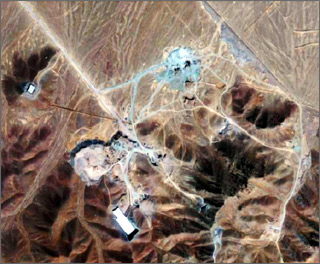
WASHINGTON, DC: Three weeks ago, Iran confidentially revealed to the International Atomic Energy Agency (IAEA) that it was constructing a nuclear facility near the city of Qom. A close reading of the development suggests that the latest move in Iran’s cat and mouse game may have been motivated by fears of an Israeli blow like the one that destroyed a secret nuclear site in Syria. If true, Iran’s anxieties about a possible military confrontation may provide the United States added leverage as it seeks to negotiate an end to Iran’s weapons program.
Press reports suggest that Tehran disclosed the previously secret plant because it had learned that foreign intelligence services had discovered the facility: Tehran, the reports say, wanted to deflect the inevitable condemnation that would come from exposure of the Qom facility by appearing to play by international rules and voluntarily bring the installation under IAEA monitoring.
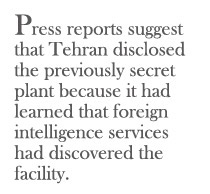
Indeed, despite the Iranian initiative, international criticism was sharp. On September 25, 2009, in a joint press conference US President Barack Obama, French President Nicolas Sarkozy, and UK Prime Minister Gordon Brown publicly disclosed the existence facility, describing it as a uranium enrichment plant capable of producing a bomb’s worth of highly enriched uranium annually and whose small size and location on an Iranian Revolutionary Guards Corps base indicated it was intended for military rather than commercial use. Declaring that the facility, which Iran had taken pains to disguise, constituted further proof that Iran was intending to develop nuclear weapons, the three leaders reaffirmed their resolve to seek intensified UN sanctions against Iran if up-coming negotiations did not succeed in eliminating this threat.
Quite possibly, however, Tehran feared something more than diplomatic opprobrium and further sanctions as the result of Western knowledge of the facility. After all, Iran had weathered some four years of UN sanctions, without complying with Security Council demands that it end its uranium enrichment program, and, indeed, it had greatly expanded that program during this period.
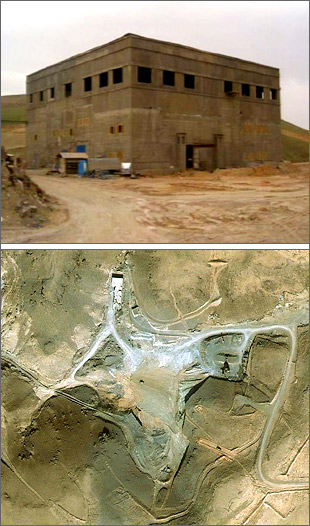
Those sanctions had been triggered by earlier disclosures that from 1985-2002 Iran had failed to disclose a constellation of facilities with the potential to produce bomb fuel to the IAEA and by questions raised by evidence that at least until 2003, Iran had been working to design a nuclear missile warhead. With Russia and China unwilling to impose tougher sanctions despite this egregious history and four successive Security Council resolutions, Tehran had every reason to believe that exposure of the Qom plant would merely lead to more of the same – sanctions that, if unpleasant, would nonetheless to be tolerable and would not prevent it from completing and operating the Qom facility, albeit under IAEA inspection for the moment, just as it had advanced its other previously hidden nuclear facilities after they were exposed.
If the threat of intensified “diplomatic pressure” seems insufficient to spur Tehran’s revelation of the facility, what might have been an added unspoken incentive for taking this step? Perhaps, fears of a military strike on the facility.
Iranian leaders knew the history: In September 2007, Syria suffered just such an attack, when Israeli warplanes destroyed an installation near the town of Dair Alzour. The CIA later revealed the site housed a nuclear reactor, modeled on the one used by North Korea to produce plutonium for its nuclear weapons. Syria had taken great pains, the CIA stated, to disguise the facility, whose configuration made it unsuited to the production of nuclear power or for traditional nuclear research.
Perhaps the most important aspect of the Israeli attack, however, was the virtual total absence of international criticism: no condemnation by the IAEA Board of Governors, no condemnation by the UN Security Council, and, indeed, no coordinated condemnation by the traditionally antagonistic Arab states. This contrasts starkly with the international hue and cry that followed Israel’s 1981 attack on Iraq’s Osiraq nuclear reactor, a facility that was openly purchased from France, modeled on another legitimate French research reactor, and under IAEA inspection.
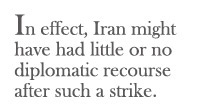
Although the Qom facility is a different type of nuclear plant from that at Dair Alzour, like the latter, it is apparently configured to produce fuel for nuclear weapons, built in secret, not disclosed to the IAEA, and carefully disguised and dug deep underground – all implying that it was intended for a nuclear weapon program. And, if the Syrian case is a legitimate precedent, an attack on the facility might not have been met with an international outcry. Iran, after all, is no more popular internationally than Syria.
In effect, Iran might have had little or no diplomatic recourse after such a strike, while the attacking state – presumably Israel, with behind-the-scenes support from the United States – might have dealt the Iranian nuclear program a serious blow and given an implicit warning of things to come if Iran failed to close down its sensitive nuclear sites, as the UN Security Council has demanded.
Supporting the likelihood that concern about the military risks of maintaining the site’s secrecy was part of Iranian thinking when it decided to disclose the Qom facility is the fact that it appeared to bow to intimidation once in the past, in 2003, as the United States invaded Iraq. At that time, undoubtedly wondering whether it would be the next target of the Bush Administration, Iran suspended all work on its large-scale uranium enrichment plant at Natanz, and it provided the IAEA unusually intrusive inspection rights (although it did not resolve all outstanding questions). The honeymoon ended in 2005, when the Iran significantly curtailed IAEA access and recommenced work to complete and then expand the Natanz enrichment plant.
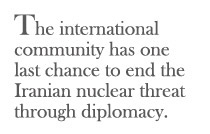
We are unlikely ever to learn the details behind Iran’s decision to disclose the Qom facility to the IAEA. But, if fear of attack is judged to have been a factor in Iran’s thinking, the Obama administration might do well to reinforce such anxieties during the on-going nuclear negotiations with Tehran. While the talks continue, Washington might display a bit more of the “stick,” through such steps as accelerating deployment of missile defenses in the region, bringing in additional naval forces, and delaying a new troop surge to Afghanistan with the hint that these forces may be needed to address other “contingencies.”
To end the Iranian nuclear threat, the United States and its partners need Iran to accept both intrusive, comprehensive inspections that eliminate the possibility of additional clandestine facilities and new measures to reduce concerns about known installations. Installations configured for production of weapons material, like that at Qom, must be dismantled and, if Iran refuses to shutter facilities that have more commercial attributes, at a minimum, it must freeze further enlargement of such units, limit their output, and accept arrangements that prevent the stockpiling of partially enriched uranium – material that could rapidly be re-enriched to weapons grade.
The international community has one last chance to end the Iranian nuclear threat through diplomacy. Washington and its allies need to use every tool in their tool kit, including veiled military threats, to make diplomacy work.
Leonard S. Spector is Director of the Washington DC Office of the James Martin Center for Nonproliferation Studies.